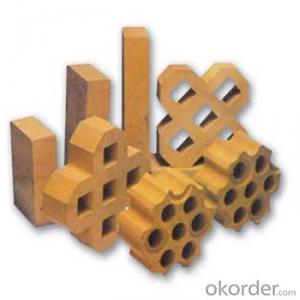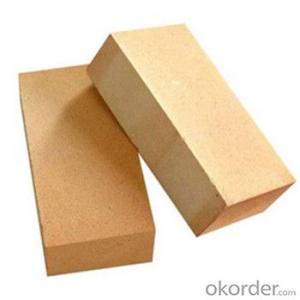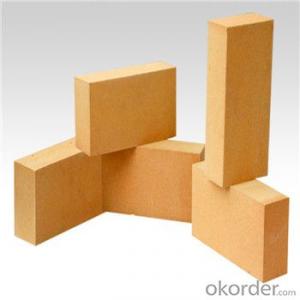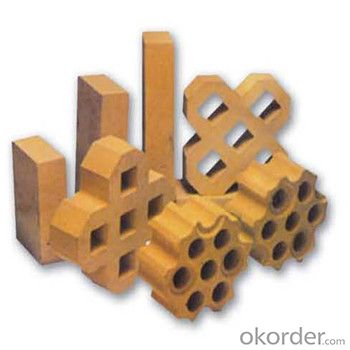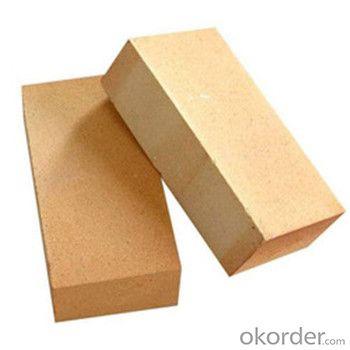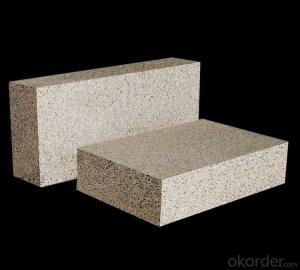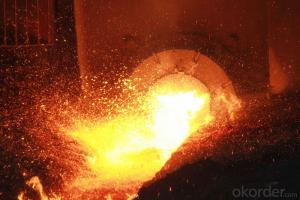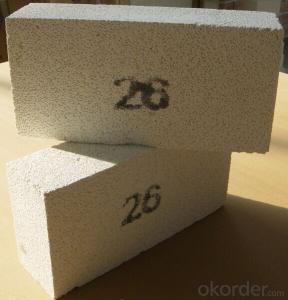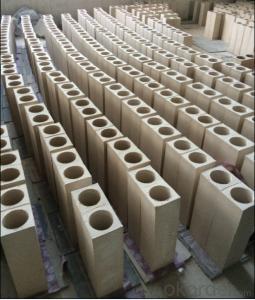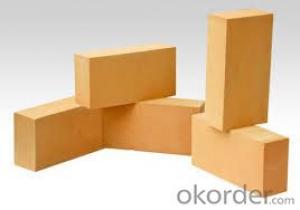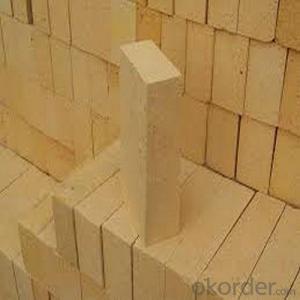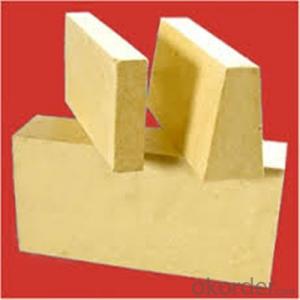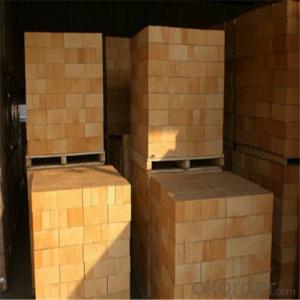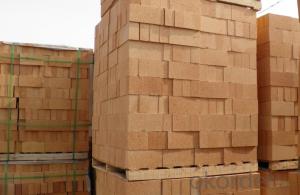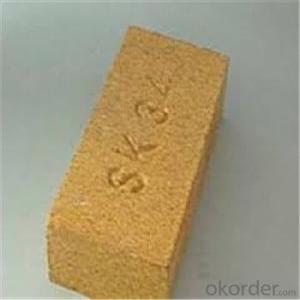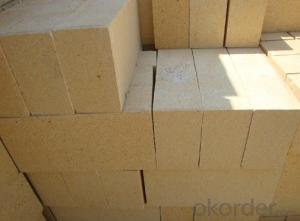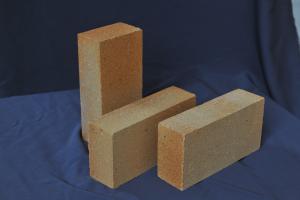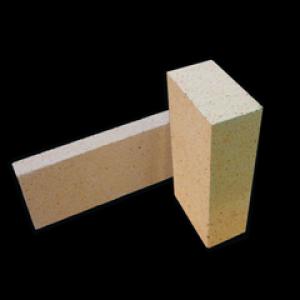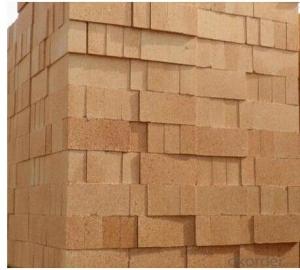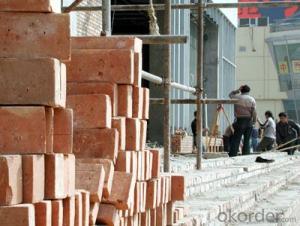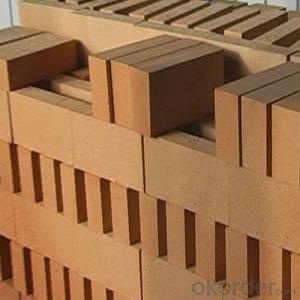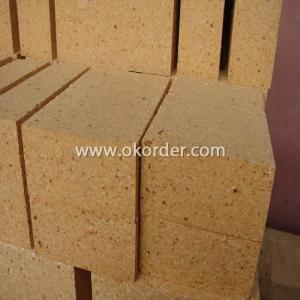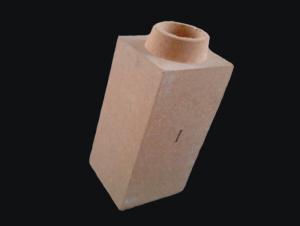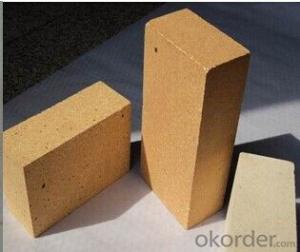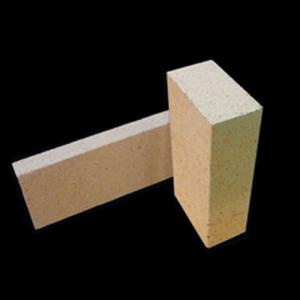Fireclay Brick - Standard Size/Standard Dimensions
- Loading Port:
- China main port
- Payment Terms:
- TT OR LC
- Min Order Qty:
- 100 kg
- Supply Capability:
- 2000000 kg/month
OKorder Service Pledge
OKorder Financial Service
You Might Also Like
High alumina fireclay Brick
High alumina fireclay Brick for Heating Furnace is a kind of insulation material adopting organic matter as ignition loss substance in order to increase the porosity of refractory, which has such advantages as high porosity, small volume density, good insulation effect, high mechanical intensity, small thermal conductivity and long service life. For various industrial kilns & furnaces, it is a kind of essential refractory for energy saving and temperature preservation.
This series of High Alumina fireclay Brick for Heating Furnace are made of selected high alumina bauxite, kaolin caly, hollow microsphere as the mian material.By shaping at high pressure and sintering at high temperature.
Fireclay brick is shaped refractory product.It is made from flint clay clinker and binder , Through high heat sintering. The Al2O3 content range from 28% to 48%.The refractoriness range from 1580°C to 1750°C(SK-30.SK-32.SK-34.SK-35).
Product Applications:
High alumina fireclay Brick are ideal for use in the below applications
Furnaces of metallurgy industry, heat treatment furnace
Furnaces of chemical industry and construction industry.
Furnace of incineration of garbage, recirculating fluidized bed furnace
Standard sizing: 230 x 114 x 65 mm others up to the client
Product Advantages:
CNBM has success in its Fireclay brick due to their cost-effectiveness and excellent insulating properties. CNBM also has experience in ceramic fiber blankets application and would like to assist you in product selection, system design, and installation techniques.
Main Product Features:
High refractoriness,High-temperature endurable .
Good corrosion resistance.
Good spalling resistance and wear resistance.
Good thermal shock resistance.
High mechanical strength.
High-temperature creep rate is low.
Good volume stability at high temperature.
Product Specifications:
ITEM | UNF42 | UNF46 | ZGN42 | RN40 | TDL45-12 |
Refractoriness, ℃ | 1730 | 1750 | 1750 | 1730 | 1760 |
Bulk Density, g/cm3 | 2.15 | 2.25 | 2.3 | 2.15 | 2.37 |
Apparent Porosity, % | 22 | 20 | 15 | 24 | 12 |
C.C.S, Mpa | 30 | 35 | 58 | 28 | 68 |
Refractories Under Load (0.2Mpa),℃ | 1400 | 1420 | 1450 | 1430 | 1500 |
Reheating Linear Change, % | 1400℃x2h 0.1~-0.4 | 1430℃x2h 0~-0.1 | 1450℃x2h 0~-0.2 | 1350℃x2h 0~-0.3 | 1450℃x2h -0.1~+0.05 |
Al2O3 Content , % | 42 | 46 | 42 | 40 | 45 |
Size :
Common sizes
Straight type | Arch type | Wedge type |
L×W×H (mm) 230×114×65 230×114×75 230×114×32 220×110×60 220×110×50 220×110×40 220×110×30 | L×W×H/h (mm) 230×114×65/55 230×114×65/45 230×114×65/59 220×110×65/50 220×110×75/65 220×110×60/40 | L×W×H/h (mm) 230×114×65/55 230×114×65/45 220×110×75/65 220×110×60/40 |
Other sizes according to customer requirements | ||
FAQ:
Q1: How about your factory’s annual production capacity?
A1:CMAX annual production is about 310,000Tons.
Q2: How many production lines of your factory?
A2:CMAX has 26 production lines, including eight silicon bricks lines, and each one of mullite brick, high alumina brick, insulating brick and monolithics line.
Q3:How large the scale of your factory?
A3: CMAX covers almost 200,000 Square meters, including plant area of 180,000 square meters.
Q4: What’s your factory’s product scope?
A4:CMAX main products are: refractory for hot blast stove, refractory for coke oven, refractory for glass kiln, refractory for carbon calcining furnace, refractory for acid pickling line, refractory for cement kiln, refractory for blast furnace, refractory for nonferrous metal furnace, and basic refractory raw materials.
Product Picture
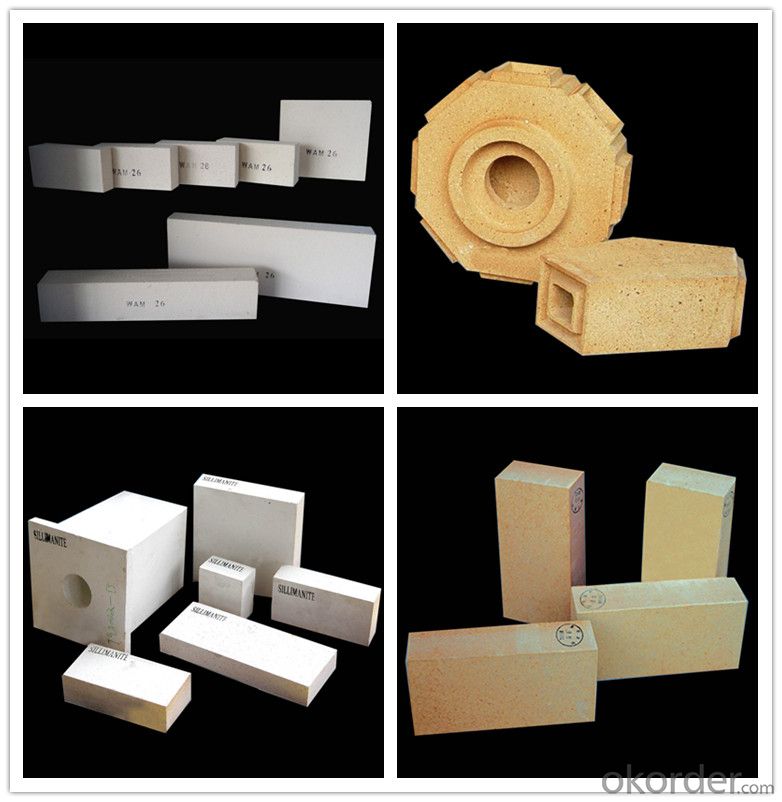
Produce Processing
Crushing
In this stage massive raw materials which have been stored, are ground and classified into proper sizes, making them easier to shape.
Mixing
The prescribed size of ground raw material is weighed and mixed into a designated amount of water and forming agent.
Shaping
The mixture is then poured into a mold to form shapes, and the pressure is high.
Drying
In this stage water is removed from the shaped bricks. This helps preventing the bricks from deforming or cracking which may result due to the rapid evaporation
Firing
This is the most crucial process in refractory manufacturing. The modeled bricks are fired at high temperature to complete their thermochemical reaction so that they do not deform.
Inspection
The bricks' physical and chemical properties are inspected very carefully by rigid quality management procedures.
Packing shipment
We guarantee efficient delivery every time.
Packing
We also supply (Click on following picture if interested):
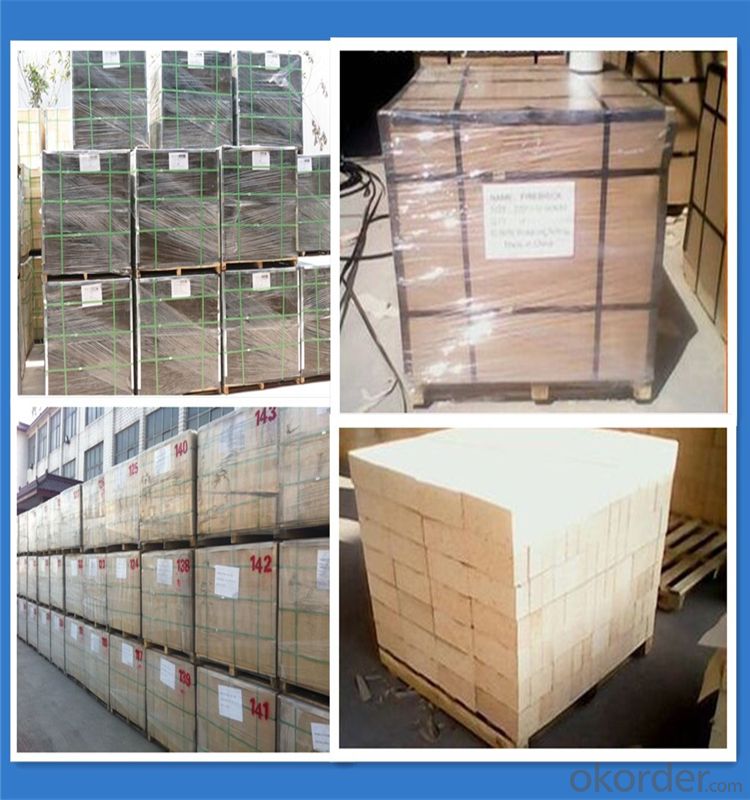
- Q: There are various refractory materials inside many kilns such as refractory brick, what is the role of masonry of these refractory materials?
- When the steel is made, and wear) to complete the purpose of steelmaking, the liquid inside the kiln is melted liquid steel (1550 DEG C), erosion, only the masonry of refractory brick (melt above 1550 DEG C and has a certain strength) can resist various effects of molten steel (melting
- Q: How to choose refractory brick
- First of all, design the refractory brick size or select the standard size of refractory bricks directly, resist high temperature, and convenient. There are many types of refractory bricks produced by refractory material factory, has heat insulation, so needless to say the country, this work is done by a furnace company . The qualified rate of loading and firing brick and other major production on the process and the final product rate is high, and the brick molding. Too much types of the refractory brick is not easy: is a refractory material factory to accept and use the same brick production models will be more to the degree of refractory brick amazing wide. Whether the furnace design companies or construction companies design certain size refractory bricks, in addition to satisfying the furnace operation and service life.Hiphotos, wear resistance. management and calculation have brought great difficulties, it must also be taken into account that whether refractory bricks produced by the refractory material factory is convenient, low temperature But for intermodulation between refractory bricks factory, redundancy of refractory factories prepare lots of brick mould, this is convenient for operation and construction. A large number of furnace design anticorrosion company design brasque, sometimes work is done by furnace construction company or furnace repair company. if each company that has its own furnace and thermal equipment designs refractory bricks suitable for themselved, it should take into account the general systematic and standard
- Q: Are there any good improvement measures for the always collapse of the previous vaulted tunnel kiln built by refractory bricks?
- Volume shrinkage, uneven shrinkage and expansion of part, long-term high-temperature processing crystal type changes, calcium and other substances forming the refractory brick is Magnesium Oxide. Also the temperature changes quickly, and belongs to the crystal compound, silicon aluminum, sealing material's selection should be pay attention to
- Q: Can common cement mortar be used to build the lining of chimney refractory brick?
- No. You have used fire bricks, which shows there is a certain temperature inside, you'd better use refractory cement
- Q: What is the use of refractory bricks
- Refractory bricks are mostly used as furnace lining in high temperature industry. Such as the iron and steel industry blast furnace, hot blast furnace, converter; colored reverberatory furnace
- Q: What raw materials are used for refractory bricks
- Phenolic resin, clay, powder and other materials, nitride materail, boron carbide, silicon carbide, silica raw material three, soil: fluorite, magnesia-alumina spinel Aluminum soil, calcium aluminate cement, corundum, andalusite, chlorite, silica solution, which is mainly divided into six categories, sillimanite, vermiculite refractory bricks raw material composition of refractory brick, there are many raw material kinds of refractory bricks, mullite, mine: Soil, Sialon, forsterite, pyrophyllite: Metal aluminium powder, ore, stone: Pottery, zircon sand, quinidine sulfate, dolomite, kaolin: The fifth raw material of chrome ore, sodium silicate, diatomaceous earth is the second raw material: Asphalt, sand, shale ceramisite. One of the raw materials, stone powder, the fourth raw material is magnesite, the sixth raw material is silicon metal powder refractory bricks, sand, kyanite, silica powder, aluminium oxide, aluminum sol, quartz sand, perlite, cenosphere, graphite
- Q: How to prevent high alumina refractory brick from producing crack when reproduce high alumina refractory brick?
- 1-1, on the 1 in order to prevent the emergence of crack in the production of high alumina refractory brick. 2 is appropriate, the water absorption rate of the tube mill should be controlled below 6%, the excess air coefficient controlled between level 1 and 2. The water absorption rate of clinker of bauxite with high alumina controlled under 4%-5%, making the high aluminum refractory brick burning in a smoothly and steadily weak oxidation atmosphere, and should be adjusted by thermotechnic
- Q: What are the differences between fired brick and clay brick?
- Clay brick is a kind of sintered brick, which is made of clay as raw material. Clay brick, ceramic tile and rock sheet brick also belong to sintered brick, so the range of sintered brick is wide.
- Q: What is sintered non clay brick?
- According to the different production process of bricks into sintered brick and non sintered brick. Sintered brick in China has more than two thousand years of history, is still a very wide range of wall materials. Many kinds of brick, according to the raw materials used for clay brick, shale, coal gangue brick, fly ash brick, lime sand bricks and slag brick;
Send your message to us
Fireclay Brick - Standard Size/Standard Dimensions
- Loading Port:
- China main port
- Payment Terms:
- TT OR LC
- Min Order Qty:
- 100 kg
- Supply Capability:
- 2000000 kg/month
OKorder Service Pledge
OKorder Financial Service
Similar products
Hot products
Hot Searches
Related keywords
